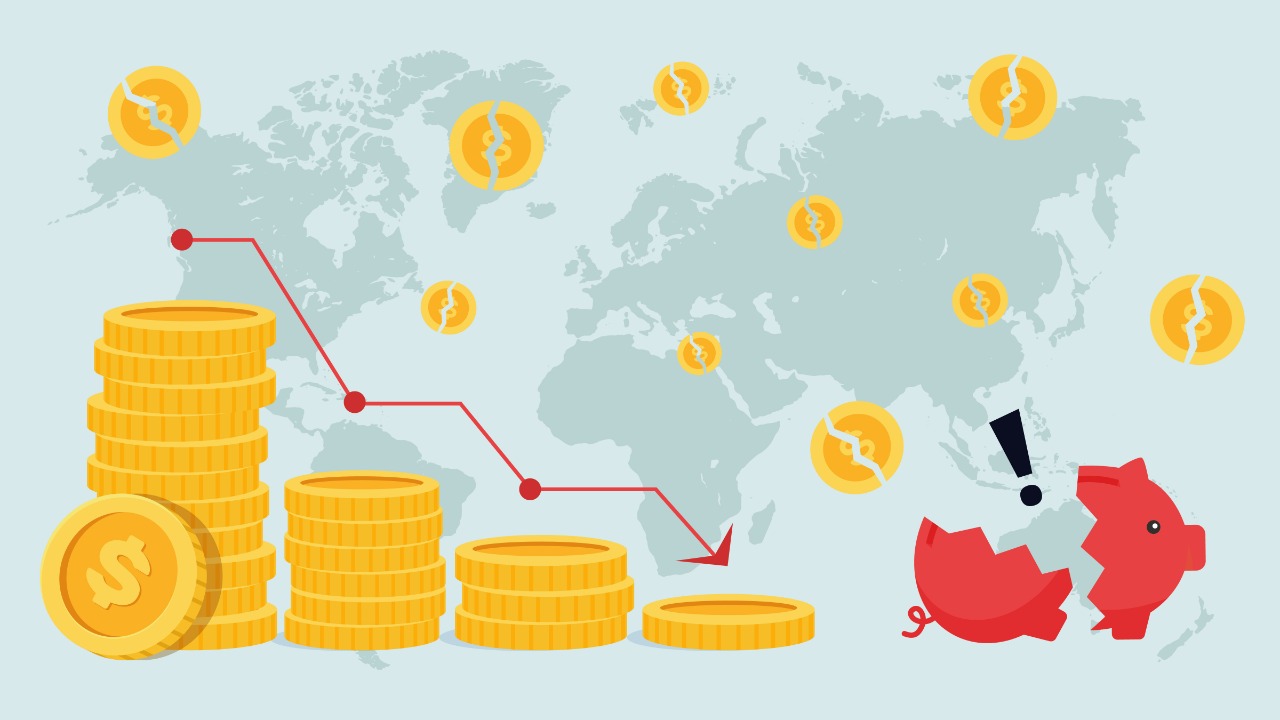
The Global Financial Crisis of 2008 has been deemed to be the worst economic disaster in modern history. This financial crisis has also been referred to as the Subprime Mortgage Crisis. Like most crises, this stems from a bubble – a rather inflated one, we are talking a $2.8 trillion inflated one. In this piece, we intend to elaborate upon the Global Financial Crisis of 2008 to the reader, so as to give them a basic understanding of how the crisis unfolded. We have restricted the usage of names and terms to the bare minimum so as to focus mainly on the concepts.
The crisis’ seeds were sown in 2001, with the US economy facing a short recession amidst the bust of the dot-com bubble, speculations of a recession and multiple accounting scandals. The Federal Reserve Bank responded by slashing the Federal Fund's rate 11 times to 1.75% in December 2001 from the original 6.5% in May 2000. This made cash cheaply available in the financial market for lending, investing and trading.
The productive capacity of the economy saw a great rise with banks having more to lend, investors having more to invest, and traders having more to trade with. The problem started when the “NINJA” financial products were given out. Simply stated, these were loans that didn’t bother as much about verifying the repayment capacity and went by the philosophy of “No Income, No Job, No Asset Verification”.
These loans were used by people for purchasing their dream homes (we use the phrase 'dream homes' because almost everyone went beyond their capacity to purchase luxurious houses that they possibly couldn’t afford to pay for). This caused sharp inflation in housing prices over time.
Borrowing had become the party piñata, people thought that all one had to do was hit it once and enjoy the candy for life. The easy credit availability and housing prices continued to surge. General inflation still remained stably low, perhaps this is what encouraged the Federal Reserve Bank to slash interest rates further down to 1% by June 2003, the lowest it had been in 45 years.
Then soon came trouble. The early signs occurred in 2004 when house-ownership in the USA had peaked at 70%; the demand began to collapse. Then, during the last quarter of 2005, home prices started to plummet, which caused a 40% decline in the U.S. Home Construction Index 2006. As many borrowers now could not withstand the higher interest rates, they started defaulting on their loans.
Homeownership had reached a saturation point and although realtors applauded this because they thought the heated housing market would restore to more sustainable levels, no one had realized that there would be far too many homeowners with dubious credit accounts and loans for 100% or more of the worth of their new homes more prevalent than thought earlier.
The Federal Reserve started raising rates on June 30 2004, such that by June 2006, the Federal funds rate reached 5.25% (which remained stable until August 2007). 2007 started with news of one subprime lender or another filing for bankruptcy. In the months of February and March 2007, over 25 subprime lenders filed for bankruptcy, which was enough to set in motion a domino effect. As this news continued to roll on, speculations about a crash began to rise – and investors failed to sell off their houses because there weren’t many houses that could be profitably sold.
It became apparent in August 2007 that the problem could not be resolved by the financial market on its own and a crisis was imminent. Lehman Brothers filed for bankruptcy, the Indymac Bank collapsed, Bear Stearns was acquired by JP Morgan Chase, Merrill Lynch was sold to the Bank of America and Fannie Mae and Freddie Mac were put under the regulation of the U.S. Federal Government. The tumbling of the tower of cards continued outside of the United States’ borders.
Due to prevailing fear of the unknown amidst banks, the interbank market froze completely. Northern Rock, a British bank, even had to approach the Bank of England for emergency financing due to the liquidity crisis. By then, a global effort by governments and central banks was well underway to prevent further financial collapse. Banks had stopped lending to each other by then to avoid further losses. It was realized that collateral mortgages had turned worthless, and therefore, interbank borrowing costs rose. The Federal Reserve began pumping liquidity into the banking system but that wasn't enough.
By October 2008, the discount rate and the Federal funds rate were decreased to 1.75% and 1%, respectively. Central banks in China, England, Sweden, Canada, Switzerland and the European Central Bank (ECB) also resorted to rate reductions to assist the world economy. But the widespread financial meltdown continued.
The U.S. government then launched the National Economic Stabilization Act 2008, which generated an amount of $700 billion to purchase distressed assets, especially mortgage-backed securities (MBS). Similarly, different governments came up with their versions of government guarantees, bailout packages and outright nationalization. These helped absorb the shocks of the market collapse and re-stabilize the financial institutions.
Once the crisis subdued in June 2009 and the market stabilized, the American Congress legislated the Dodd-Frank Wall Street Reform Act 2010 to prevent banks from taking too much risk and it allows the Federal Reserve to deduct the bank size for those that become too big.
The Financial Crisis of 2007-08 has taught us that the confidence of the financial market is quite fragile when struck and almost impossible to forge quickly. In a globalizing world, an apparent liquidity crisis can rapidly turn into a solvency crisis for financial institutions, a balance of payment crisis for sovereign nations, and a full-blown crisis of confidence for the entire globe. Yet, we know from our past experiences that after every crisis, markets come back with greater rigour and strength than before.
